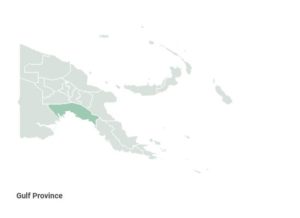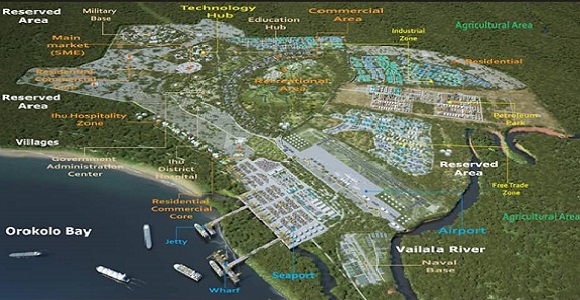A fifteen-year plan to develop the Ihu Special Economic Zone is expected to be approved this month. Driving its development will be the infrastructure requirements for Papua New Guinea’s second liquefied natural gas project—Papua LNG.
Centered on the Kikori district of Gulf Province, the Ihu Special Economic Zone (ISEZ) will consist of a free trade zone, petroleum park, industrial zone, technology park, forestry park, marine park, a deep sea port and airport, a township with hotels and resorts, and a government and administration area, Peter KenGemar, the ISEZ Project Director tells Business Advantage PNG.
 ‘We are awaiting an announcement about the construction date of the proposed Papua LNG project,’ says KenGemar.
‘We are awaiting an announcement about the construction date of the proposed Papua LNG project,’ says KenGemar.
‘It will mean we can go ahead with developing infrastructure for the project, including a road network link to Kerema [Gulf Province’s capital], wharfs and jetties, a township development, an airstrip and a clean water and power supply.’
‘We estimate the ISEZ will create up to 25,000 jobs when it is fully operational and another 25,000 jobs indirectly.’
According to KenGemar, the cost of Stage One is expected to be K5 billion, to be spread over five years.
‘But we estimate that revenue will be about K10 to K12 billion annually when Stage One is up and running.
‘We estimate the ISEZ will create up to 25,000 jobs when it is fully operational and another 25,000 jobs indirectly.’
Gas industries
Kikori District is one of 89 districts in PNG. It hosts 80 per cent (18 trillion cubic feet) of the discovered but undeveloped proven gas reserves in PNG. The planned ISEZ is ideally located for future development of PNG’s gas industries, including LNG, LPG, power generation and petrochemicals.
It currently hosts the Kutubu Oil export pipeline and offshore Kumul marine terminal.
Kikori will also be the base for the central processing facility for the country’s second LNG project, Papua LNG, and the planned offshore Twinza Oil’s Pasca Gas Condensate Project, the first of its type in the country.
A development application for the field has been submitted, with first production targeted for 2020. The field contains 19 million bbl of condensate and 20 million bbl of LPG. The propane component of the LPG will be sold into Papua New Guinea’s domestic market while the condensate, butane, and excess propane will be exported.
The liquids project is expected to have a 20-year lifespan with a development cost of US$350-550 million.
‘Revenue will be about K10 to K12 billion annually when Stage One is up and running.’
Infrastructure
KenGemar said domestic and international air traffic passes over the ISEZ location. As well, a number of international shipping routes currently pass through the planned ISEZ locality.
‘The seaport and the airport have the potential to be major freight ports in the Pacific, because of their importance to the gas industries and associated export-driven industries, including agriculture, forestry, fisheries, mining and eco-tourism.’
The Minister for Commerce and Industry, Wera Mori, has stated that the PNG government wants to create four free trade zones around the country: the Pacific Maritime Industrial Zone (PMIZ) in Madang, the Sepik Plains special economic zone, the development of wharves in Kikori and Vanimo, and the Ihu Special Economic Zone (ISEZ).










Speak Your Mind